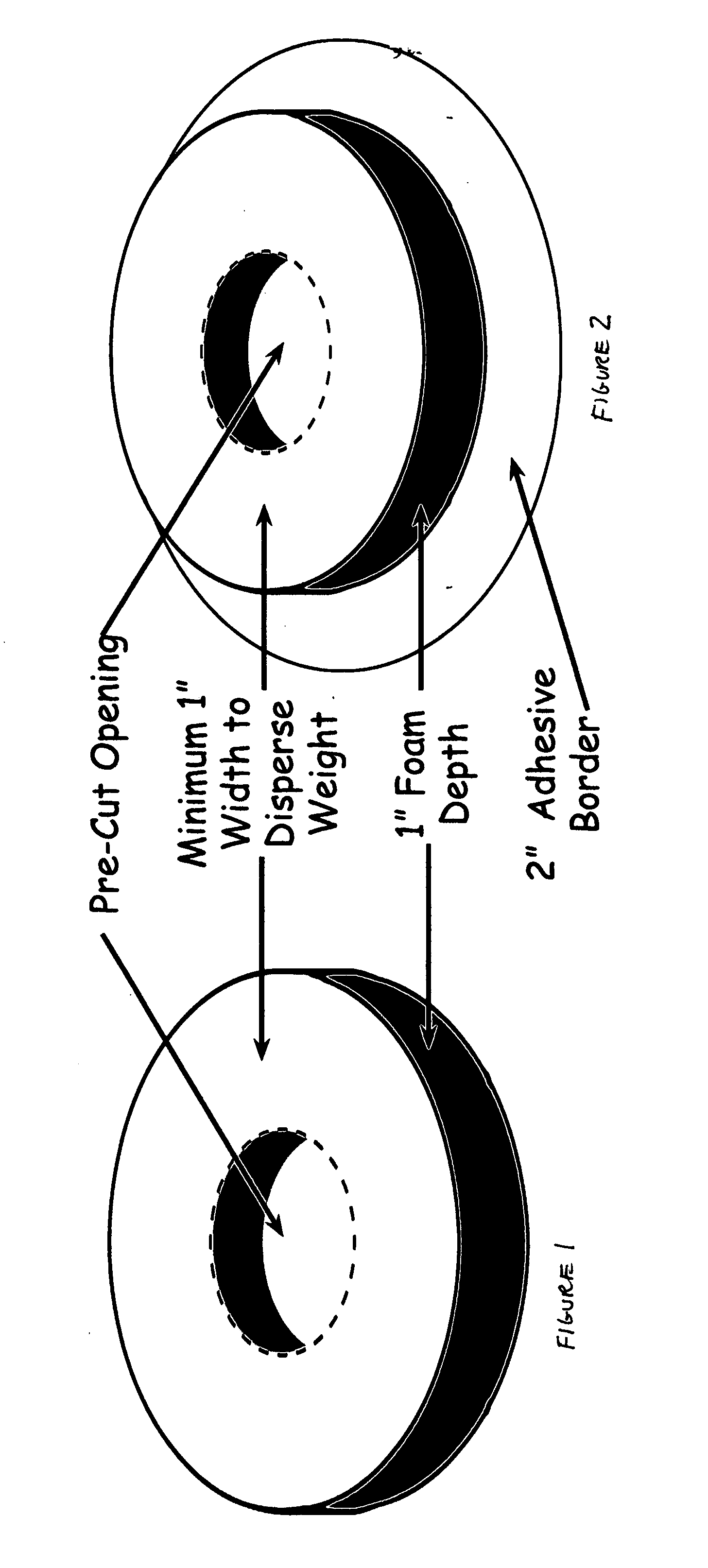Pressure relief dressing
a technology of pressure relief and dressing, applied in the field of pressure relief dressing, can solve the problems of progressively worsening, and reducing the blood supply to the affected area, and achieve the effect of maximum blood circulation
- Summary
- Abstract
- Description
- Claims
- Application Information
AI Technical Summary
Benefits of technology
Problems solved by technology
Method used
Image
Examples
Embodiment Construction
[0015]A flexible, round, foam bandage made from a material with the integrity of a hydrocellular polyurethane dressing, for application to the skin of an individual to treat pressure ulcers. Said bandage will provide full pressure relief around the ulcer site, thus, allowing maximum blood circulation for uninhibited healing to occur.
[0016]Hydrocellular polyurethane dressings are already being manufactured. The modification is that the pressure ulcer bandage will have precut openings where the wound is positioned so no pressure is applied to the wound; an opening at least 0.25 inches larger than the wound should be utilized; remaining foam, a minimum of 1.5 times the diameter of the opening, will reach beyond the opening to allow for the dispersement of weight away from the wound site to prevent secondary wounds; the pressure ulcer bandage will be one inch thick to eliminate contact to the wound and help to disperse pressure from the wound site.
[0017]The precut opening keeps pressure...
PUM
 Login to View More
Login to View More Abstract
Description
Claims
Application Information
 Login to View More
Login to View More - R&D
- Intellectual Property
- Life Sciences
- Materials
- Tech Scout
- Unparalleled Data Quality
- Higher Quality Content
- 60% Fewer Hallucinations
Browse by: Latest US Patents, China's latest patents, Technical Efficacy Thesaurus, Application Domain, Technology Topic, Popular Technical Reports.
© 2025 PatSnap. All rights reserved.Legal|Privacy policy|Modern Slavery Act Transparency Statement|Sitemap|About US| Contact US: help@patsnap.com


